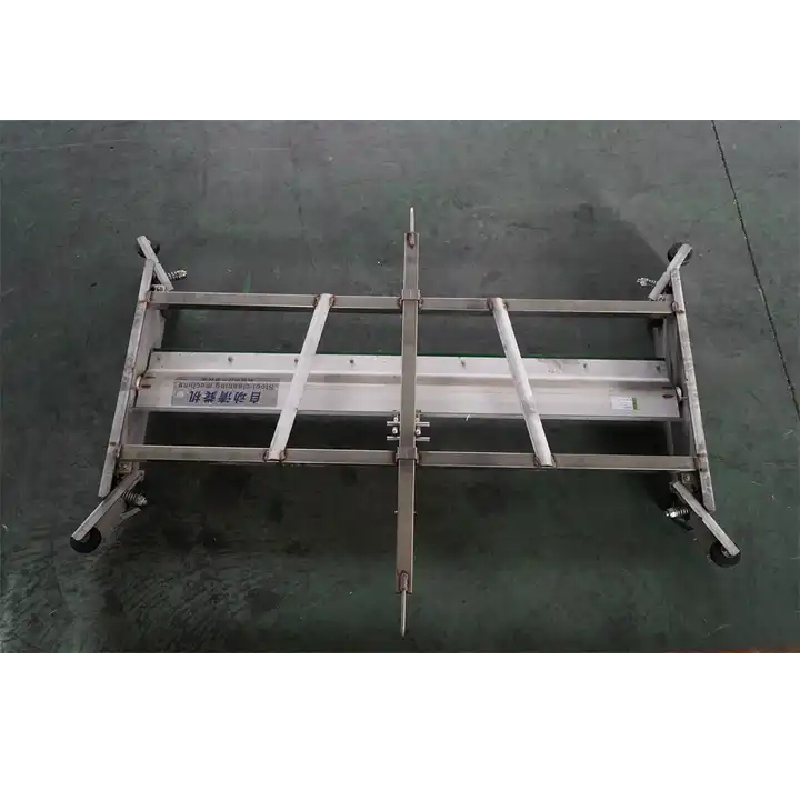commercial duck plucker
Nov . 14, 2024 01:49 Back to list
commercial duck plucker
The Commercial Duck Plucker Revolutionizing Poultry Processing
The poultry industry is continuously evolving, with innovations designed to enhance efficiency and productivity. One such innovation that has significantly transformed the way ducks are processed is the commercial duck plucker. This machine has become an essential asset for duck farms and processing facilities as it streamlines the plucking process, saving both time and resources.
Understanding the Need for Duck Plucking
In traditional poultry processing, plucking feathers from ducks is often a labor-intensive and time-consuming task. Each duck can have thousands of feathers, and removing them manually is not only inefficient but can also lead to inconsistencies in the quality of the finished product. This is where the commercial duck plucker comes into play, offering a solution that can handle large volumes while ensuring uniformity and quality.
How Commercial Duck Pluckers Work
A commercial duck plucker typically consists of a rotating drum lined with rubber fingers or plucking elements. Once the ducks have been properly scalded to loosen the feathers, they are fed into the plucker. As the drum spins, the rubber fingers grab the feathers and pull them out without damaging the skin of the duck. This mechanical process is significantly faster than manual plucking and can handle multiple birds at a time, dramatically speeding up the processing line.
Benefits of Using a Commercial Duck Plucker
1. Efficiency The primary advantage of using a commercial duck plucker is the efficiency it brings to the processing operation. A single machine can pluck several ducks in the time it would take a worker to process just one or two by hand. This increased throughput is crucial for businesses aiming to meet high demand.
commercial duck plucker

2. Labor Cost Reduction By automating the plucking process, farms and processing plants can significantly reduce labor costs. With fewer workers needed for hand plucking, resources can be reallocated to other vital areas of the business, such as quality control or customer service.
3. Consistent Quality Mechanical plucking provides a consistent quality standard that is hard to achieve with manual labor. The uniformity in feather removal helps ensure that all ducks are processed to the same quality, resulting in a better product for consumers.
4. Less Waste Manual plucking often leads to more waste due to damaged skins or improperly processed ducks. A commercial plucker minimizes this issue, allowing producers to maximize their yield and reduce losses.
5. Improved Hygiene Automated plucking machines often have better sanitation practices compared to manual processes. They can be designed to minimize human contact with the product, ultimately improving food safety.
Considerations for Purchasing a Commercial Duck Plucker
When considering the purchase of a commercial duck plucker, several factors should be taken into account. First, it is essential to evaluate the machine's capacity to ensure it meets the demands of the specific operation. Additionally, the durability and maintenance requirements of the equipment are crucial for long-term viability. Finally, the initial investment versus potential savings should be considered to ensure a sound financial decision.
Conclusion
The commercial duck plucker represents a significant advancement in poultry processing, particularly for the duck industry. By enhancing efficiency, reducing labor costs, and ensuring consistent quality, it has become an indispensable tool for modern poultry operations. As the demand for duck meat continues to rise, investing in such innovative technology will undoubtedly provide a competitive edge in the market. The evolution of poultry processing is not just about keeping up with demand; it is about doing so in the most efficient and sustainable way possible.
-
Automatic Feeding Line System-Pan Feeder Nipple Drinker|Anping County Yize Metal Products Co., Ltd.
NewsJul.29,2025
-
Hot Sale 24 & 18 Door Rabbit Cages - Premium Breeding Solutions
NewsJul.25,2025
-
Automatic Feeding Line System Pan Feeder Nipple Drinker - Anping County Yize Metal Products Co., Ltd.
NewsJul.21,2025
-
Automatic Feeding Line System Pan Feeder Nipple Drinker - Anping County Yize Metal Products Co., Ltd.
NewsJul.21,2025
-
Automatic Feeding Line System - Anping Yize | Precision & Nipple
NewsJul.21,2025
-
Automatic Feeding Line System - Anping Yize | Precision & Nipple
NewsJul.21,2025






